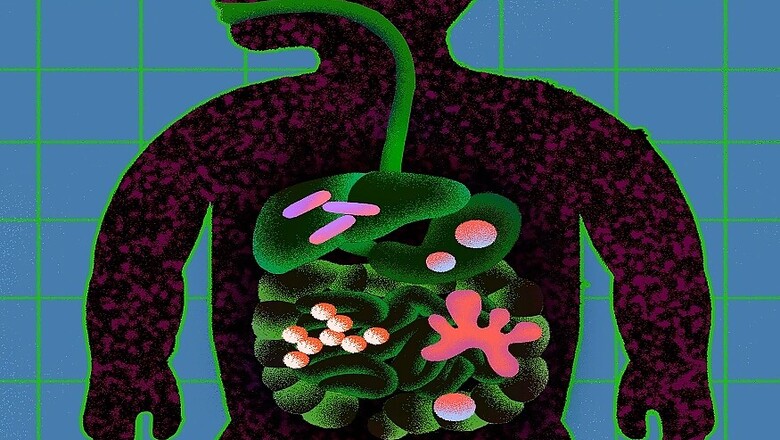
views
For parents, one of the most reassuring aspects of the coronavirus has been that it largely spares children, only causing mild symptoms. But recent reports of a new life-threatening pediatric inflammatory syndrome are worrying many families. Children in Europe, Britain and now the United States are being hospitalized for this mysterious illness, which can harm kids’ hearts and other organs, often requiring intensive care.
According to New York Governor Andrew M. Cuomo, as of May 12, New York was investigating 102 cases of this syndrome and three deaths, and cases have been reported in 14 other states so far as well. Thankfully, this new syndrome is still quite rare and it is treatable, and most kids who develop it fully recover. Here’s what parents need to know and what they should do if they’re concerned about their children’s health.
Doctors suspect Covid-19 is involved, but they aren’t certain.
No one knows for sure whether this new syndrome, which is now being called pediatric multisystem inflammatory syndrome, or PMIS, is linked to the coronavirus, but many doctors think so. “I do think that this is related to Covid,” said Dr. Eva Cheung, a pediatric cardiologist and critical care specialist at New York-Presbyterian Morgan Stanley Children’s Hospital, which has treated more than 35 patients so far with the syndrome.
The vast majority of children who’ve fallen ill in New York have either tested positive for active Covid-19 infection or have had antibodies suggesting that they were exposed to the virus at some point. A few kids have tested negative for both active infection and antibodies, and it’s unclear what that means. It’s possible that these negative tests were inaccurate, Cheung said, because many coronavirus antibody tests are unreliable.
What’s interesting, though, is that most of the children who have gotten sick — even those whose tests indicated prior coronavirus exposure — did not report having a recent respiratory illness. This suggests that these children were either exposed to the coronavirus but didn’t get sick or that they had very mild symptoms, said Dr. George Ofori-Amanfo, the division chief of pediatric critical care medicine at Mount Sinai Kravis Children’s Hospital.
Even if Covid-19 is involved, it’s unclear what happens to make these children so sick.
Ofori-Amanfo suspects that children who develop this syndrome were exposed to the coronavirus and that their bodies for some reason mounted an exaggerated — and ultimately dangerous — immune response, much like the “cytokine storms” that have caused some adults to fall quite ill in the later stages of infection.
They may “have an abnormal and aggressive immune response to Covid — and that immune response is so aggressive that it affects other organ function and affects their ability to maintain their blood pressure,” Ofori-Amanfo said. This may then cause their bodies to go into rapidly progressive shock, requiring medications and, in rare cases, the use of life support to take over the job of their heart and lungs.
Still, doctors stress that no one yet knows for sure what is going on. “We don’t even exactly know what this disease is,” said Dr. Rebecca Pellett Madan, an associate professor of pediatric infectious diseases at the NYU Grossman School of Medicine.
The syndrome has been compared to several known conditions, but it’s probably new.
When it first arose, many doctors noticed that this new syndrome had features similar to Kawasaki disease, a rare condition that typically afflicts children under 5, causing their blood vessels to become inflamed. But although its symptoms are similar, and both are conditions marked by widespread inflammation, most doctors do not think this current syndrome is the same thing as Kawasaki. “They may share features,” Cheung said, but “I truly do think that this is its own syndrome.”
The pediatric inflammatory syndrome also looks a lot like toxic shock syndrome, which occurs when the body goes into shock because it has been exposed to toxins released during bacterial infections. But Ofori-Amanfo said that none of Mount Sinai’s patients had evidence of a bacterial infection in their body, so it was likely that the pediatric inflammatory syndrome, again, looked similar to toxic shock syndrome but was not actually the same thing.
The symptoms are noticeable and serious.
The good news is, the new pediatric inflammatory syndrome is easy to spot; its symptoms are serious enough that parents should be able to notice them. All patients developed a fever of 101 or higher that didn’t go away, said Dr. James Schneider, a pediatric critical care specialist at Cohen Children’s Medical Center in Queens, which has treated more than 40 patients so far with the syndrome
Cheung agreed, adding that kids with temperatures of 99 or 100 probably aren’t at risk. “That is not what we’ve seen here. The patients that we’ve seen that have needed admission to the hospital have had pretty moderate to high fevers,” she said.
Most kids also develop serious abdominal pain that get progressively worse over time. It’s not a garden-variety kids’ stomachache; it’s serious pain that is often accompanied by vomiting and diarrhea and is “severe enough for the parent to be worried,” said Ofori-Amanfo.
For some kids, the pain has been so bad that parents and doctors assumed the child had appendicitis and needed surgery, said Dr. Nadine Choueiter, a pediatric cardiologist at the Children’s Hospital at Montefiore in the Bronx.
Many kids with the syndrome — but not all — develop rashes, too. The rashes are red and often appear on the hands, forearms and chest, Ofori-Amanfo said, although they can appear anywhere. They typically turn white when you press on them and then turn red again when you stop. They also usually cover a large area — a child’s entire face, for instance, or a substantial part of their arms or legs. “It’s not like a tiny speck of a rash. It’s pretty diffuse,” Cheung said.
Kids with the syndrome sometimes also have red eyes, cracked lips, a sore tongue and swollen hands and feet; and they might complain of muscle soreness and not want to walk. But these symptoms are not as common as the fever and abdominal pain, doctors said, and some of the symptoms may come and go.
“Sometimes the skin and the eye findings kind of wax and wane to the point that one doctor will go in the room and say, ‘I saw a rash,’ and then another doctor goes in the room three hours later, and the rash is entirely different,” Choueiter said.
Doctors haven’t identified any conditions or medical histories that put children at risk for the syndrome — except for coronavirus exposure.
“All our patients have been previously healthy patients, with no underlying illnesses,” Ofori-Amanfo said. Some of the kids who developed the syndrome even had multiple siblings who remained perfectly healthy.
Doctors are also seeing the syndrome in both sexes, but “we are seeing it in slightly more boys than girls — like 60% boys, 40% girls,” Choueiter said. The age range is wide, too; the Children’s Hospital at Montefiore has seen the syndrome in kids from 5 months to 20 years old. It has not been observed in adults.
The one thing that clearly puts children at risk is living in an area with a lot of COVID-19 cases. But again, because kids who get sick with the syndrome didn’t necessarily have any COVID-19 symptoms, it can be hard for parents to know if their children might be at risk.
If your child develops a fever and seems unwell, contact your pediatrician.
If you child has a persistent fever above 101 — and especially if they develop other symptoms consistent with the syndrome, like a bad stomachache — contact your pediatrician. “Ask to speak to them over the phone or do a telemedicine visit and have your pediatrician walk through the steps of what to look for,” Pellett Madan suggested. Cheung agreed, noting that in geographical areas where this syndrome has appeared, hospitals are making sure that local pediatricians know what to look for and what to do.
If your child has a fever but is in good spirits and is eating and drinking and not complaining about pain, you don’t need to rush them to the emergency room, but again, stay in touch with your doctor. On the other hand, if your child really seems unwell — isn’t eating or drinking, doesn’t want to move much and especially if they develop a rash or red eyes along with a high fever — it’s not a bad idea to go directly to the ER, Pellett Madan said.
Remember that this syndrome is rare and that most kids recover.
It’s estimated that hundreds of thousands of children around the country have contracted the coronavirus, and the vast majority only have very mild symptoms. This serious syndrome is “still a very rare occurrence,” Schneider said. Your child is probably going to be fine.
Melinda Wenner Moyer c.2020 The New York Times Company




















Comments
0 comment